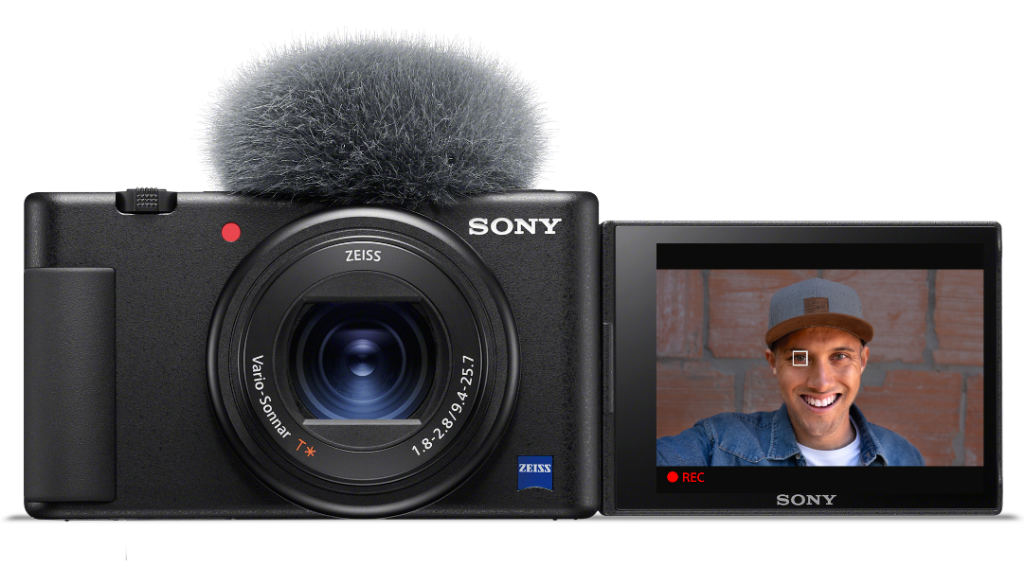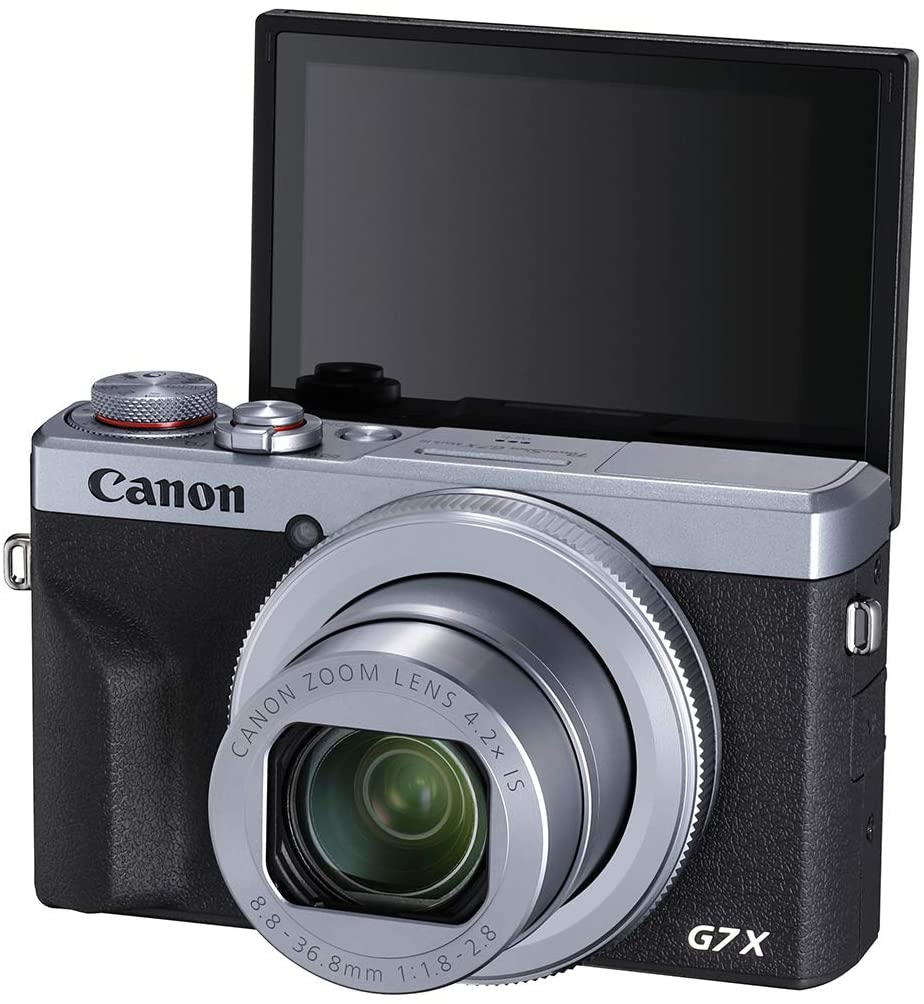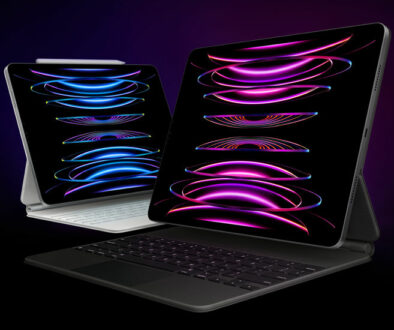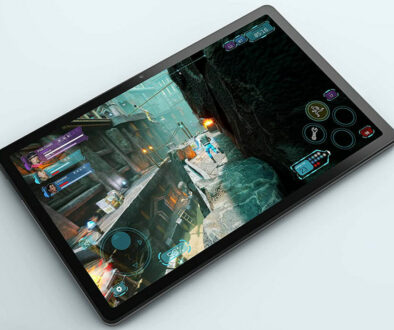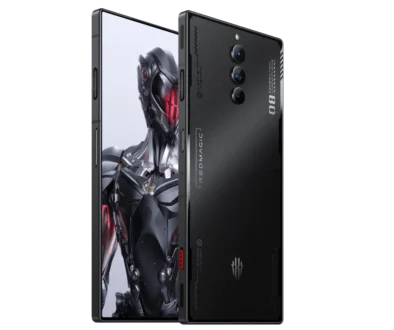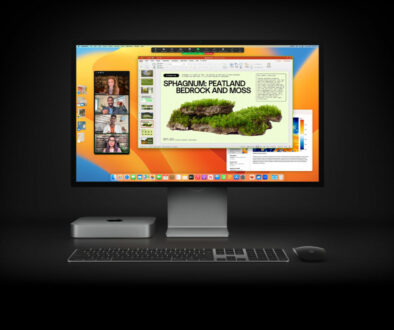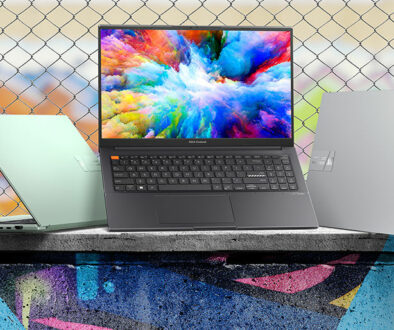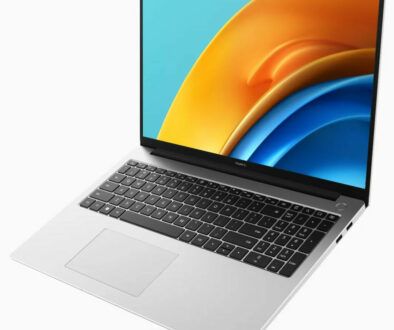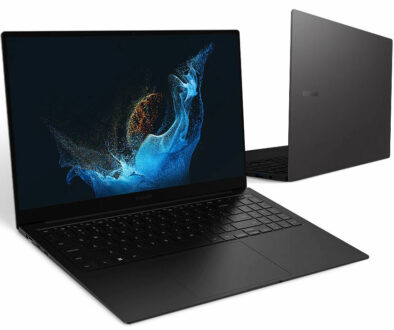Top 5 Best Video Cameras for YouTube Vlogging
Vlogging has become a serious profession these days. With more than 37 million YouTubers and that number growing steadily every day, creating vlogs is a serious business. But not all budding YouTubers tastes success. For each successful YouTuber who gets to monetize his/her channel hundreds fold up and leave.
So what makes a YouTube vlogging channel click? The main thing is the quality of the content. And when we talk about the quality of content the quality of the video and the audio comes into the equation immediately.
Today we are going to talk about the best video cameras for YouTube vlogging:
- Sony ZV-1 (Our choice as the best vlogging camera in 2021)
- Canon PowerShot G7X Mark II
- Olympus OM-D E-M5 Mark III
- GoPro Hero 9 Black
- Canon EOS M50
1. Sony ZV-1 Camera (Our Choice as the Best Vlogging Camera in 2021)
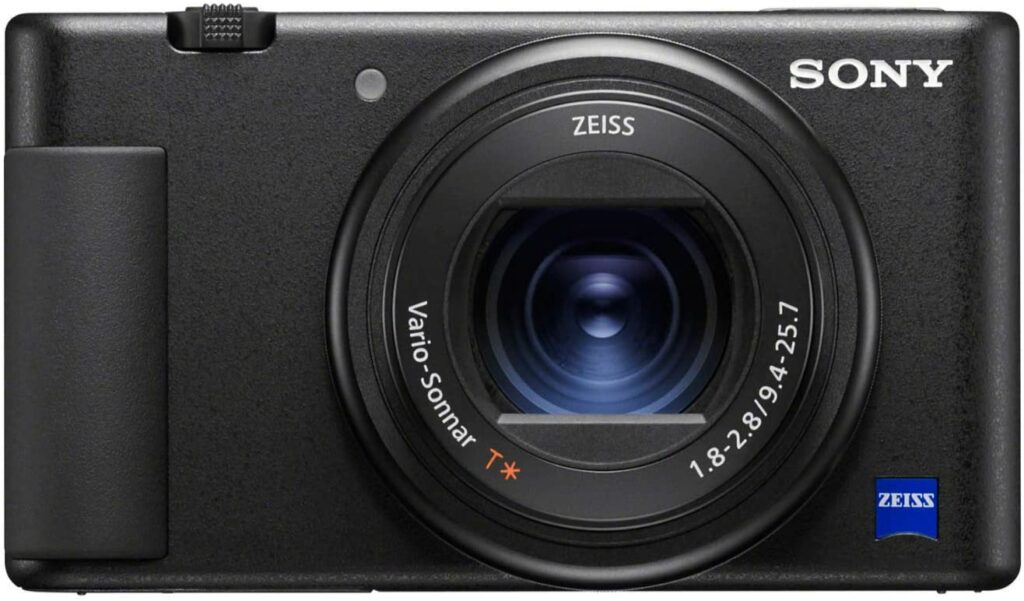
The Sony ZV-1 took the vlogging world by storm when it was released last year. It is everything you can ask for if you are a serious vlogger and more.
Sensor: The Sony ZV-1 is powered by a 20.1MP 1-inch RS BSI CMOS sensor.
Image Processor: Paired with the sensor is a BIONZ X image processor & Front-End LSI.
Video Resolution: The ZV-1 shoots at a resolution of 4K/UHD at a maximum frame rate of 30p.
Log: You get HLG & S-Log3 Gammas with this camera.
Built-in Lens: The built-in lens on the ZV-1 is 24-70mm (35mm format equivalent) with a maximum aperture range of f/1.8 to 2.8.
Rear LCD Screen: The 3-inch rear LCD screen flips-out giving you a clear view of what’s being recorded by the camera. Great for selfie shots or videoing yourself talking or presenting. The screen is mounted on the short side so it opens like a landscape book up to 180 degrees, see below.
Built-in Mic: The ZV-1 comes with a directional 3-Capsule mic which tends to do the job even in windy conditions. When you buy the ZV-1 you also get a dead-cat (microphone wind cover, we love animals big or small, even dead ones but would never harm any of them). That improves the sound quality even when you have windy conditions.
Optional External Mic: If you want to use an external mic, you can do so. There is an external mic input jack. Many professionals and semi-professional
Other Features: One of the interesting features of the ZV-1 is the product showcase feature. This feature allows you to make smooth focus rocking between a face and a product in the foreground.
There is a second interesting feature on the camera called Background Defocus. In this mode, you can quickly switch to the maximum aperture of the lens for background separation of the subject. This model also produces nice bokeh for that cool cinematic feel.
Bluetooth and wireless connectivity features are also built-in.
Who should buy it?
Ardent vloggers, YouTubers, and content creators would love the simplicity of the ZV-1. It is a feature-loaded camera and one that has an edge over the Canon PowerShot G7X Mark III.
2. Canon PowerShot G7X Mark III
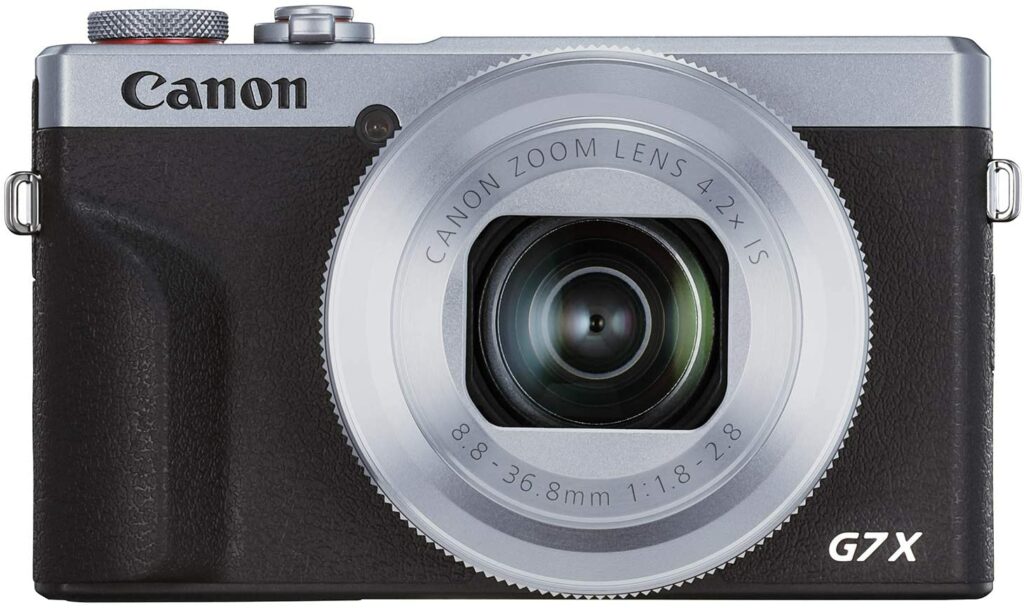
Sensor: Powering the Canon PowerShot G7X Mark III is a 20.2-MP 1-inch stacked CMOS sensor.
Image Processor: Paired with the image sensor is a DIGIC 8 image processor.
Video Resolution: The G7X Mark III shoots 4K/UHD at 30p maximum. Apart from that, it can also shoot at full HD at 120p.
Log: There are no Log options on the G7X Mark III. This is a major disadvantage if you prefer to do color grading of your footage.
Built-in Lens: The built-in lens on the G7X Mark III offers a 35mm format equivalent focal length range of 24-100mm.
Rear LCD Screen: The 3.0-inch rear LCD touchscreen offers a resolution of 1.04M-dots. The touchscreen can tilt to 180 degrees allowing you to record yourself while being able to check if you are in the frame and focus at full 180 degrees or shoot a subject from lower angles with screen viewfinder at 90 degrees tilt.
Built-in Mic: There is a built-in stereo mic on the camera.
Optional External Mic: Apart from the built-in stereo mic, you can also plug in an external stereo mic. There is a mic-input jack in the camera.
Other Features: Among the other features, you get built-in wireless and Bluetooth. By linking your smartphone to the camera, you can access the remote functions that allow you to trigger the camera from a distance.
Excellent Real-time Eye-AF with Real-time Tracking for excellent focusing when recording vlogs.
The micro-HDMI port provided with the camera allows you to plug in an external recorder to record the footage externally. You can optionally use the micro-HDMI port to plug in an external screen for a better view when recording.
Who should buy it?
Sans the Log option the G7X Mark III is a complete vlogging camera. To be honest a lot of YouTubers and content creators don’t do color grading. Many are content shooting in Auto mode and using the footage out of the camera to make their final cuts. They wouldn’t necessarily find the absence of Log too much of an issue.
3. Olympus OM-D E-M5 Mark III (Best Vlogging Camera for Adaptability)
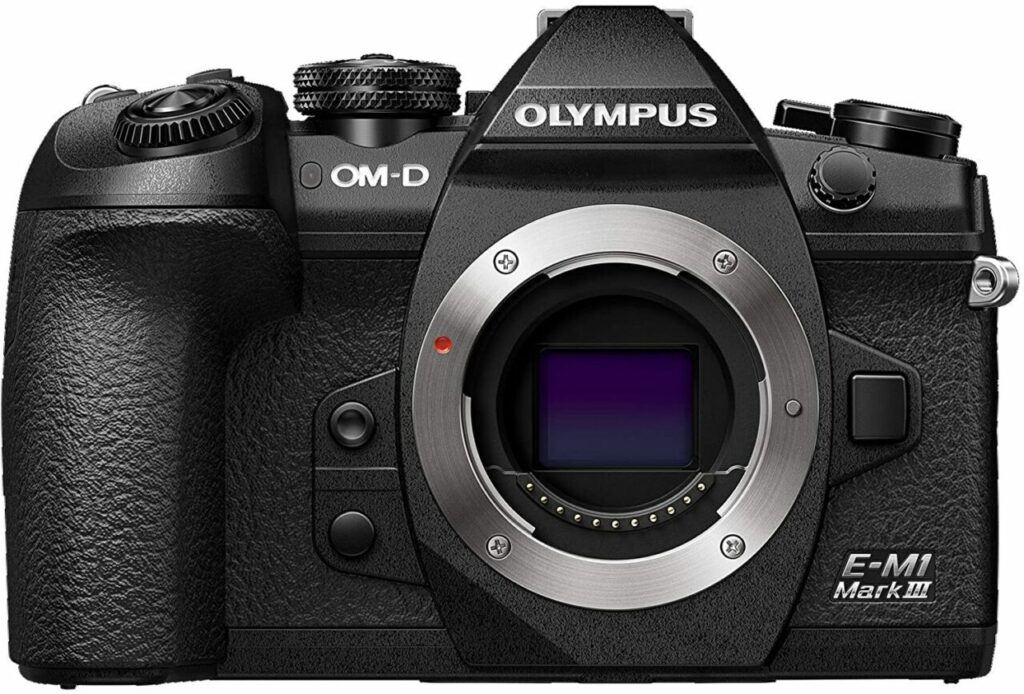
Sensor: The sensor inside the Olympus OM-D E-M5 Mark III is a micro four-thirds unit with a resolution of 20.4MP. This is a Live MOS sensor. Micro four-thirds sensors are larger than the 1-inch sensors we have listed above. That means if the sensor resolution remains the same, the micro four-thirds sensor is likely to produce cleaner images compared to a 1-inch sensor-powered camera.
Image Processor: Paired with the sensor is a TruePic VIII image processor.
Video Resolution: The main feature of interest is the video resolution. In that regard, the Olympus OM-D E-M5 Mark III shoots DCI/4K at 24p and UHD/4K at 30p. One of the few cameras on this list that shoots true DCI 4K footages.
Log: The camera supports OM-Log with the added option to output clean 4:2:2 8-bit color footages to an external recorder for a greater degree of control over color correction.
Built-in Lens: None. Interchangeable lens mount.
Rear LCD Screen: 3-inch 1.04M-dots rear articulating LCD touchscreen. It flips down, with the hinge mounted on the bottom edge of the screen. It is the opposite of how the Canon PowerShot G7X Mark III’s screen is mounted.
Built-in Mic: Built-in stereo mic.
Optional External Mic: You get the option to plug in an external stereo mic.
Other Features: The camera comes with a built-in 5-axis sensor-shift image processing engine. It means any compatible lens you mount on the camera automatically becomes image-stabilized up to 6.5 stops.
The second interesting feature is weather sealing. This is one of those rare cameras on this list that comes with proper weather sealing.
Wireless and Bluetooth are also built-in.
Who should buy it?
The Olympus OM-D E-M5 Mark III is a very powerful camera for someone who needs more than just an easy shooter. Yes, the Sony ZV-1 and the Canon G7X Mark III are great cameras too, but the Olympus OM-D E-M5 Mark III is an all-around unit that you can play with different lenses. Plus, it comes with an array of features. For starters, consider the M.Zuiko Digital ED 12-45mm F4.0 EZ Lens Kit
4. GoPro Hero 9 Black (Best Vlogging Camera on a Budget)
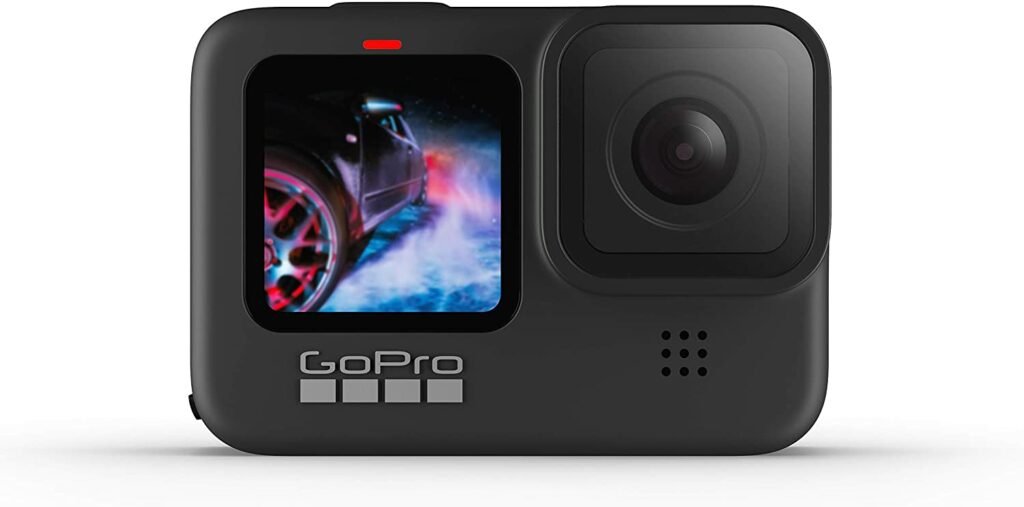
We love the GoPro hero 9. We feel this is the best budget vlogging camera. not only is it compact, it comes with dual display, is waterproof, can withstand extreme temperatures, offers super smooth video stabilisation (it is after all an action camera), supports live streaming and can shoot up to 5K video.
Sensor: The Hero 9 is the latest action camera in this line-up. it is powered by a 23.6-MP sensor 1-chip CMOS sensor.
Image Processor: Retains the same GP1 processor from the older model.
Video Resolution: 5K 30fps maximum video resolution when shooting in wide lens mode as well as narrow lens mode. The aspect ratio is 16:9.
Log: There is no Log option on the camera.
Built-in Lens: The digital lens comes with three viewing options – SuperView, Wide, Linear + Horizon Leveling, Linear, and Narrow
Rear LCD Screen: The rear LCD screen is a non-articulating unit. The size is 2.27-inch. There is also a secondary display at the front, but it is too small. The rear touchscreen supports touch zoom functionality as well.
Built-in Mic: Captures audio in .wav format.
Optional External Mic: There is a 3.5mm mic adapter sold separately that allows you to plug in an external mic.
Other Features: The most notable of the other features is that the Hero 9 is waterproof up to a depth of 33-feet without the need for any additional housing.
Who should buy it?
Anyone looking for their first vlogging camera on a budget can look at the GoPro Hero 9. Sure, it may not have the features of a large LCD screen, or Log Gamma, or even a built-in stereo mic, but the small frame, easy recording option, and 5K recording feature more than makeup for that. Plus, the Hero 9 is an inexpensive camera.
5. Canon EOS M50
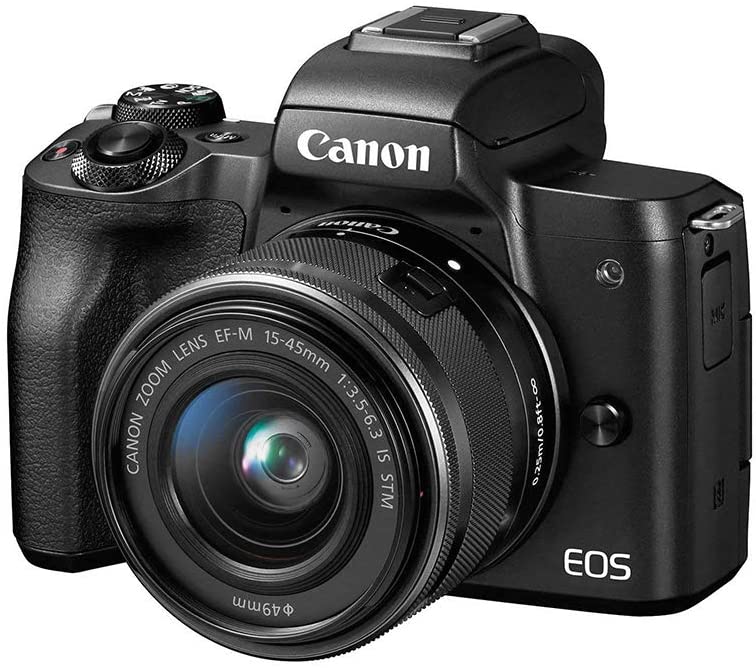
Sensor: The EOS M50 Mark II is powered by a 24.1MP APS-C CMOS sensor.
Image Processor: The camera features Canon’s DIGIC 8 image processor.
Video Resolution: The highest video resolution possible on the camera is UHD/4K at 30p.
Log: There is Log feature on the camera.
Built-in Lens: This is an interchangeable lens camera. You can use any of Canon’s EF-M mount lenses.
Rear LCD Screen: The articulating touchscreen at the back of the camera has a resolution of 3-inch.
Built-in Mic: There is a built-in stereo mic. Plus you can also plug in an external mic if you want to.
Other Features: Dual pixel CMOS autofocusing is an interesting feature that Canon has provided in this camera. It is useful for subject tracking in the movie mode and will certainly help with vlogging especially when showcasing a product or providing a step-by-step tutorial.
Who should buy it?
Beginner vloggers looking for an entry-level camera to shoot 4K/UHD videos can definitely have a look at the EOS M50 Mark II.
Essential Camera Accessories for Vlogging
1. 12″ Foldable Selfie Ring Light with a Tripod Stand for Vlogging
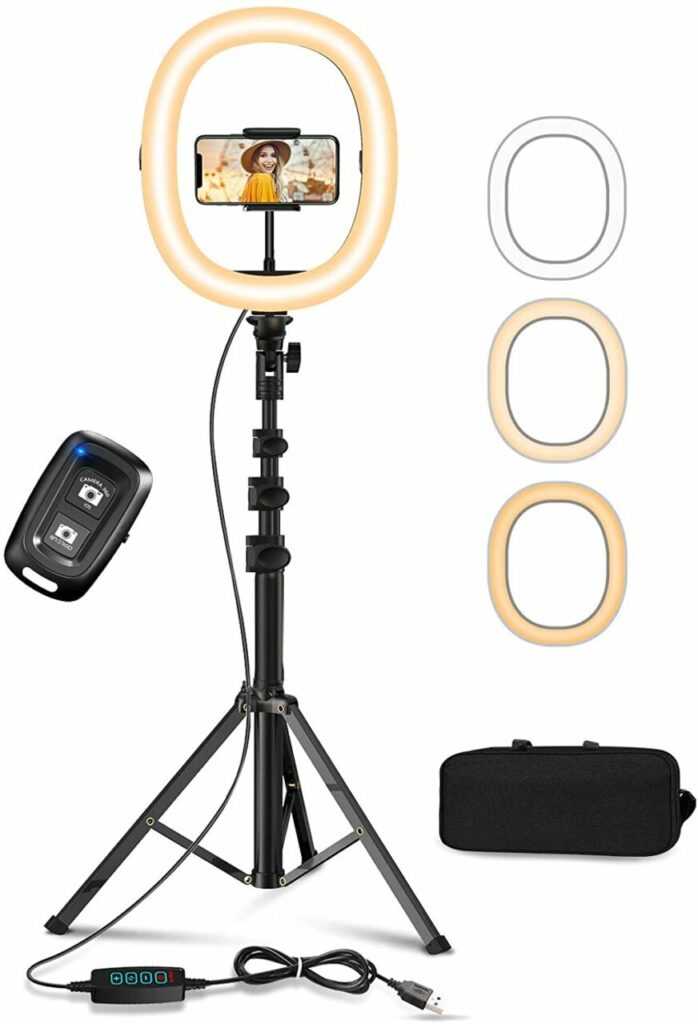
For a few bucks, you can one of these. A complete set-up consisting of a ring-light, a tripod stand for the light, and a smartphone mount. You may not need the smartphone mount, but the rest is perfect for vlogging, especially for the parts which you shoot indoors.
This light is dimmable, plus you can choose between three lighting modes. This gives you better control over both the color temperature and the brightness.
2. Rode VideoMic GO Lightweight On-Camera Microphone
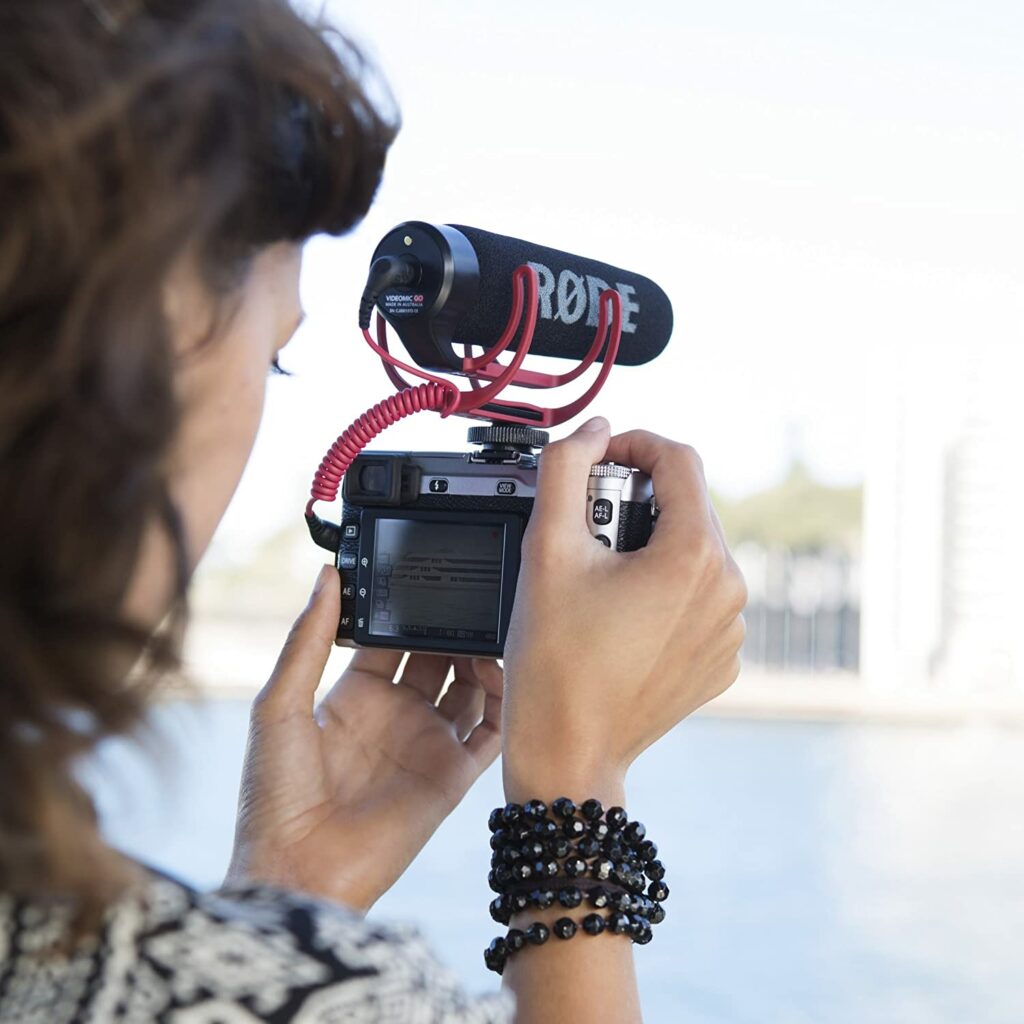
Cheaper of the two favourite offerings from Rode, the other is the Rode VideoMic Pro. Both are just as compact, and light enough to be mounted on the top of the camera. It comes with Rycote Shockmount and cover. It does not only look the part but works well too especially for interviews, great to focus on the subject and not too much of the background noise.
3. ZHIYUN Crane M2 3-Axis Gimbal Stabilizer
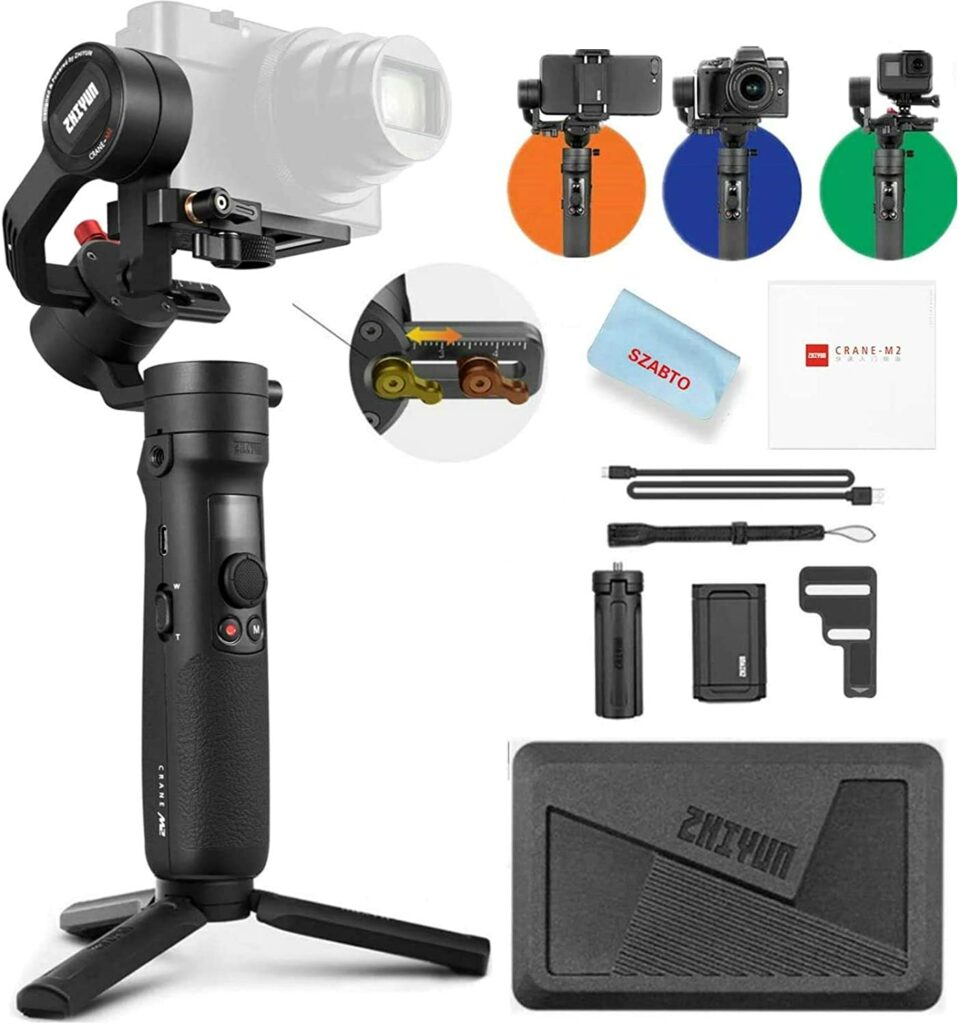
Gimbal stabilizers are a must-have if you are shooting products, B-rolls, and even yourself while holding the camera at an arm’s length. These stabilizers offer you a shake-free recording experience without the need for complicated body-worn rigs. This tool works with several camera systems including action cams, smartphones, and smaller interchangeable lens cameras.
4. YOTTO USB Microphone Kit 192KHZ/24BIT Plug & Play
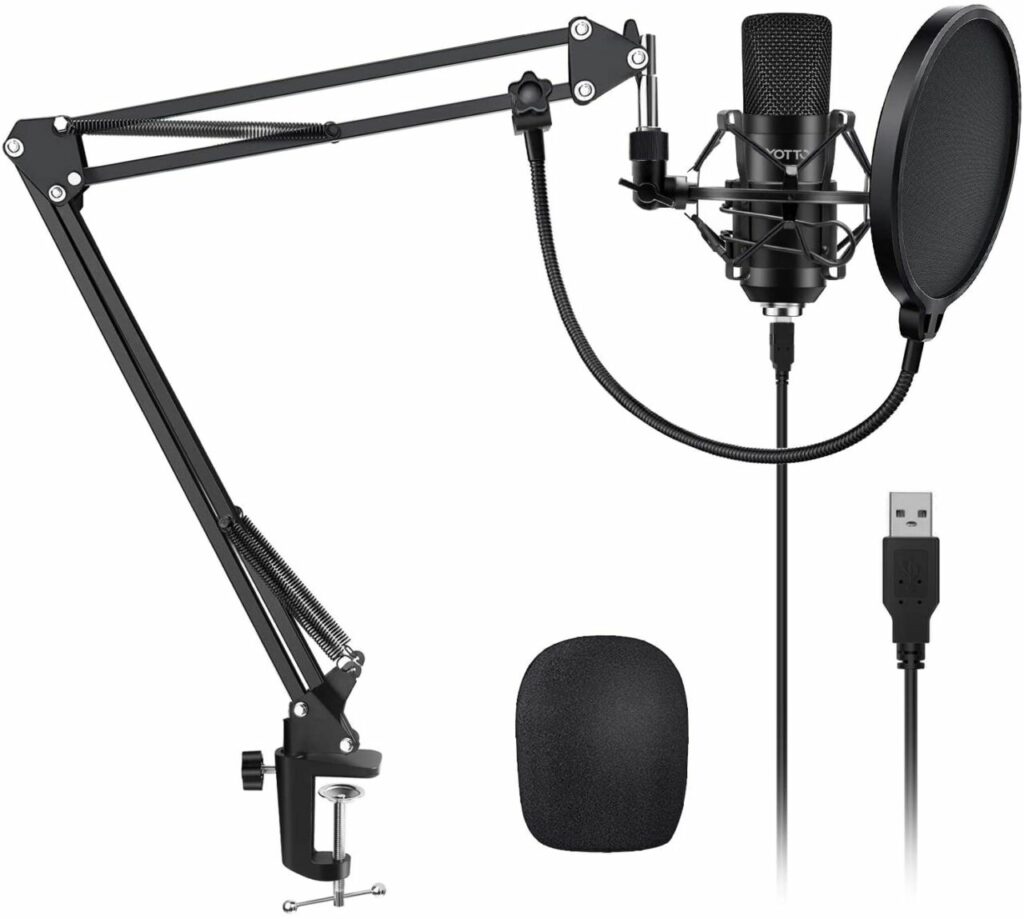
The Yotto is a plug-and-play condenser microphone complete with a boom arm, pop-filter, and a microphone holder. You also get a microphone wind cover to boot. This is a complete package for someone looking to start a career in vlogging and who needs a simple budget solution. Condenser microphones are by far the best when it comes to recording yourself for your vlogs. You can use your laptop to record because the microphone uses a plug-and-play USB cable. You can then add the sound recording to your video.
RELATED:
- How to Choose a Computer for Video Editing: For your next epic blockbuster
- Best Digital Cameras for Shooting 4K Videos: Top 5 choices for Vloggers & YouTubers
Edited by Samuel J Tan
